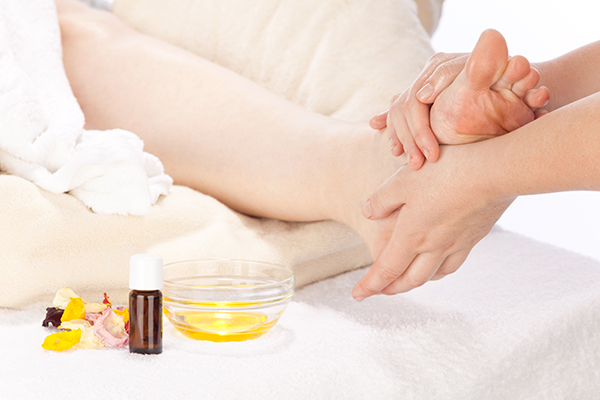Origin: a Latin derivative
meaning "Gift of the Earth."
Part 5: The Appropriate Dose (Topical Application)-Functions of the Skin
Topical application is a very effective method for applying essential oils. Because essential oils have low molecular weights and are lipid soluble, they easily penetrate the skin. Once absorbed, they stay in the applied area for a localized benefit. Although essential oils are readily absorbed, there are many ways to increase absorption. Using a light massage will increase the area of application. Use of a carrier oil can also increase absorption, especially in skin that is dry or flaky as it helps moisturize the skin and slow evaporation.
Essential oils are very potent so it is always advisable to use several small doses throughout the day rather than a single large dose. Start with the lowest possible dose (1–2 drops) and then increase the dose as necessary to achieve the desired benefit. A topical dose can be repeated every 4–6 hours as needed. Because every individual is unique, the dose will vary for each individual based on size, age, and overall health status.
Beneficial Areas You Can Apply Essential Oils:
- Neck
- Forehead and temples
- Chest
- Abdomen
- Arms
- Legs
- Bottom of feet
Other Effective Methods of Topical Application:
- Add a few drops of oil to a warm bath
- Make a hot or cold compress by soaking a towel or cloth in water, adding essential oils, and then applying to the desired area
- Add oil to a lotion or moisturizer and then apply to skin

Many people do not know that the skin is an organ, just like the liver, heart, or brain. This unique tissue plays many vital roles in the body including:
- Protection. The skin serves as a waterproof barrier that protects tissues and organs from UV radiation and injury. It also prevents microbes or other unwanted substances from entering the body. Even water would be damaging if allowed to enter the body uncontrolled!
- Temperature Regulation. To maintain an optimal physiologic environment, the body must remain within a strict temperature range (generally around 98.6 °F). Although heat is transferred by other mechanisms (urine output, breathing, etc.), the skin is the only controllable outlet for regulating temperature. It works both by changing the amount of blood flowing through vessels in the skin (which allows more or less heat to be released) and by increasing or decreasing perspiration levels.
- The Sense of Touch. The skin is linked with an intricate system of nerves that provide the brain with information about the environment. The skin can sense temperature fluctuations, pain, pressure, or touch. When sensory messages are received by these nerves, they are sent to the cerebral cortex in the brain for interpretation and integration.





